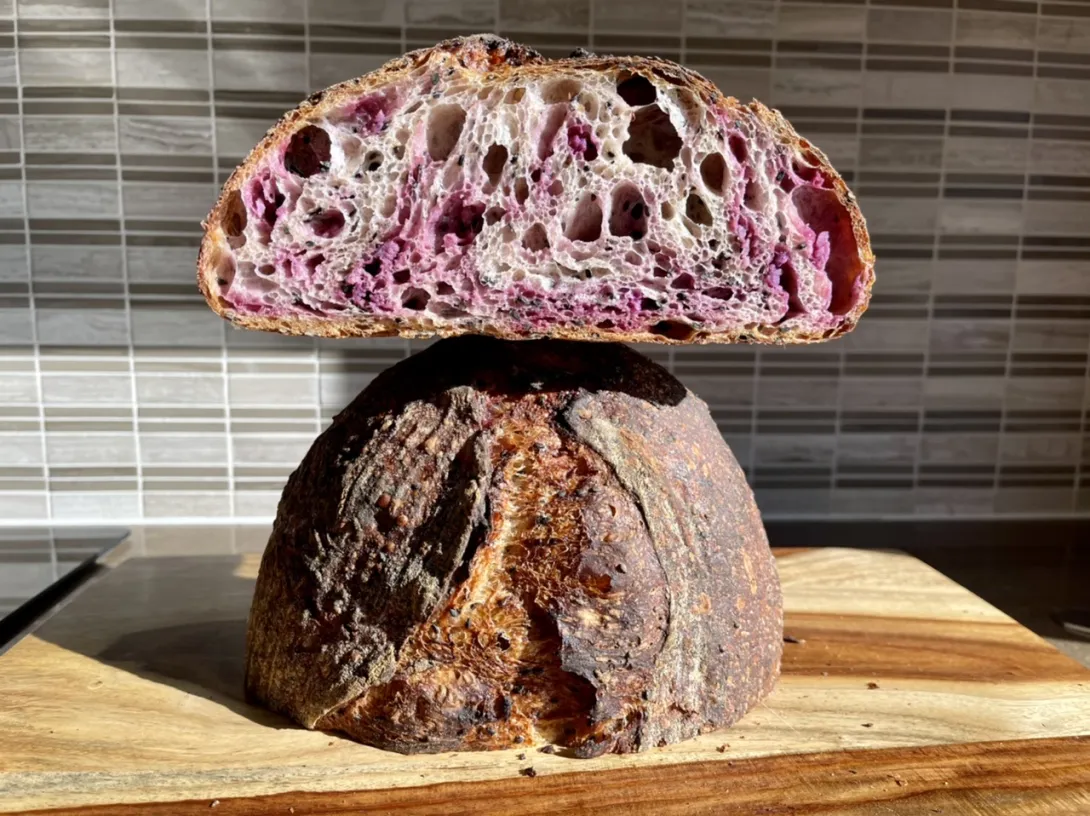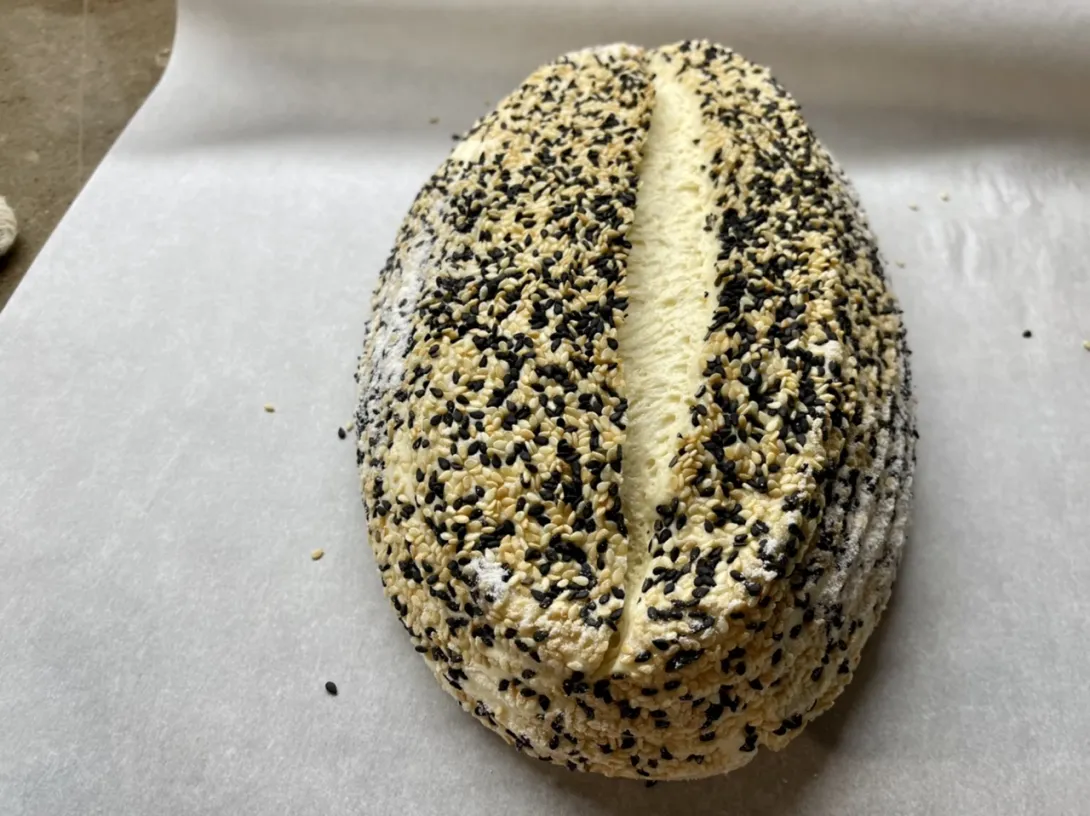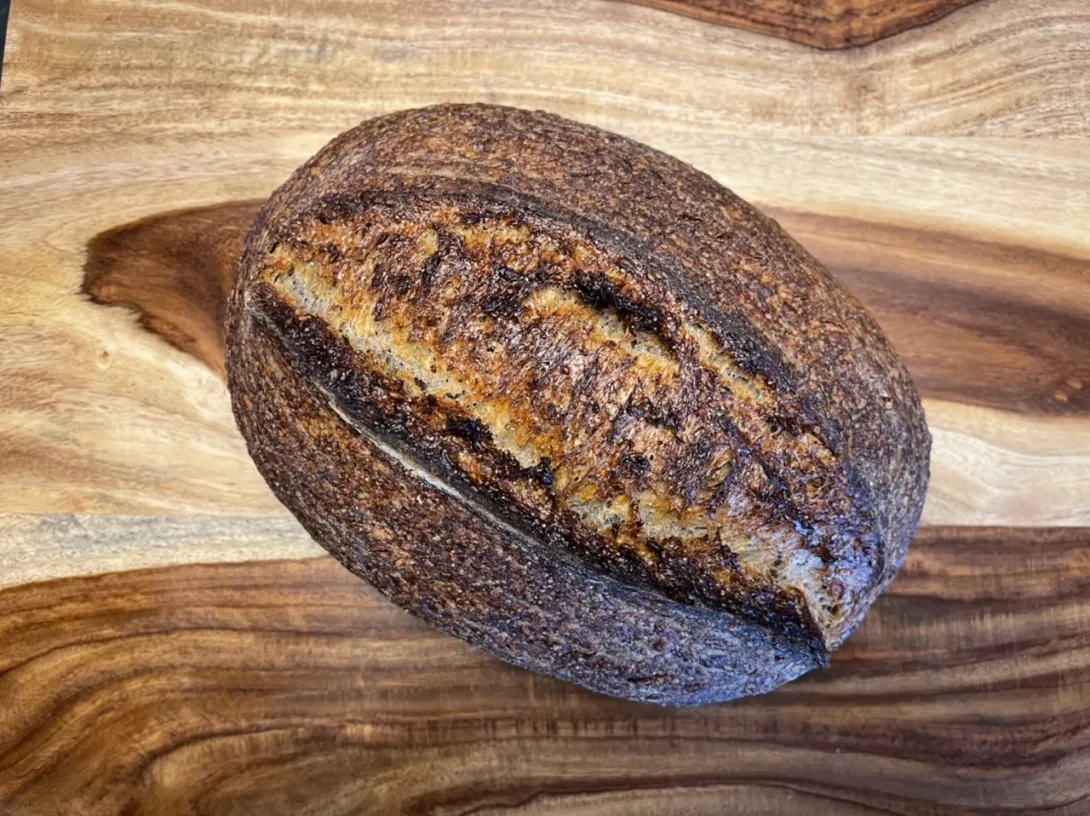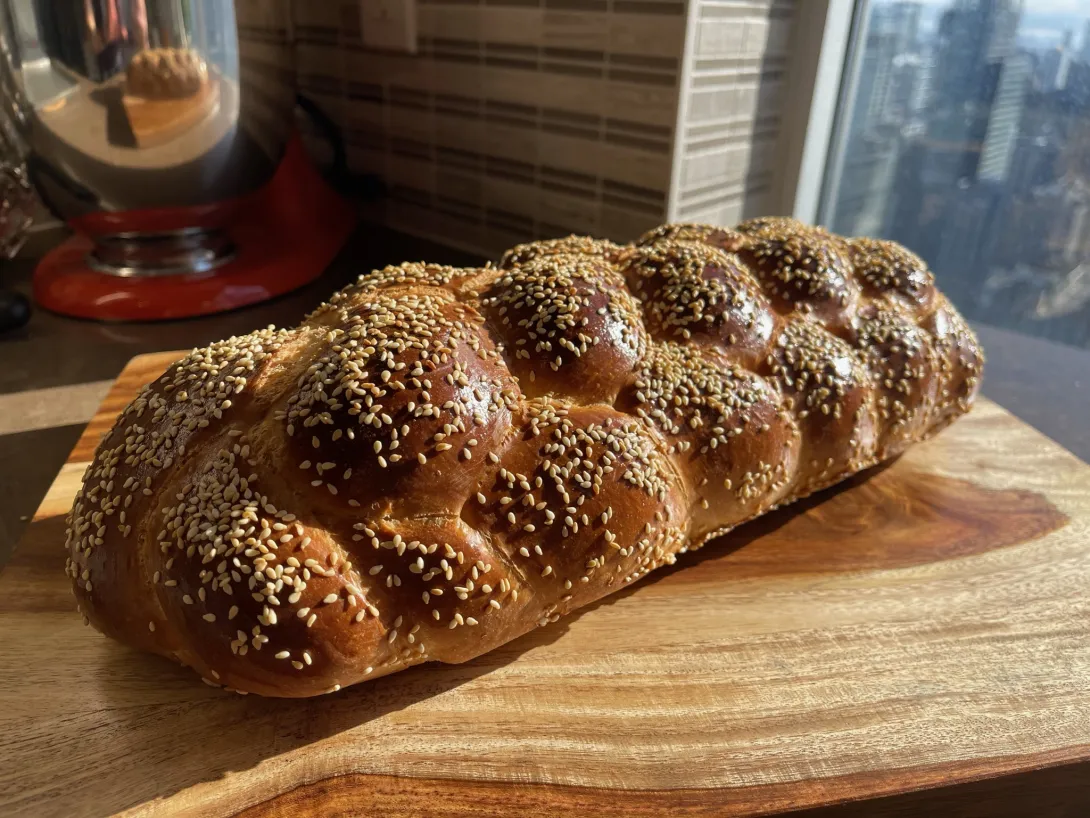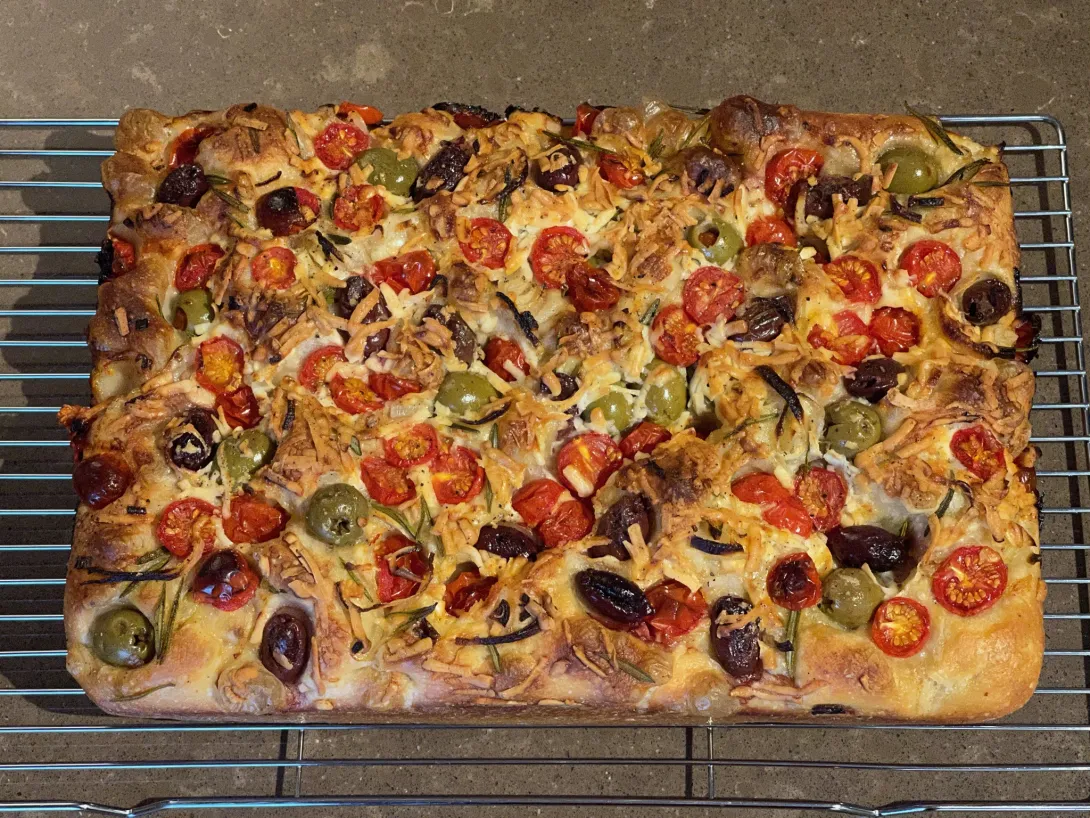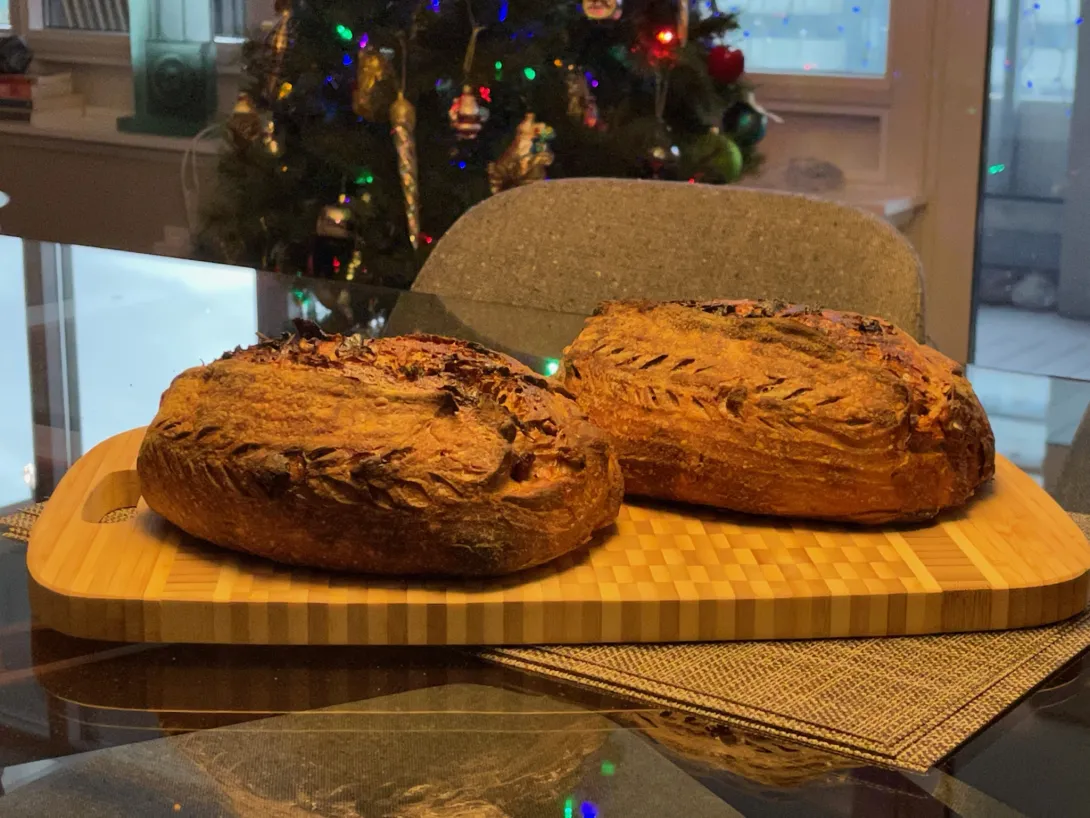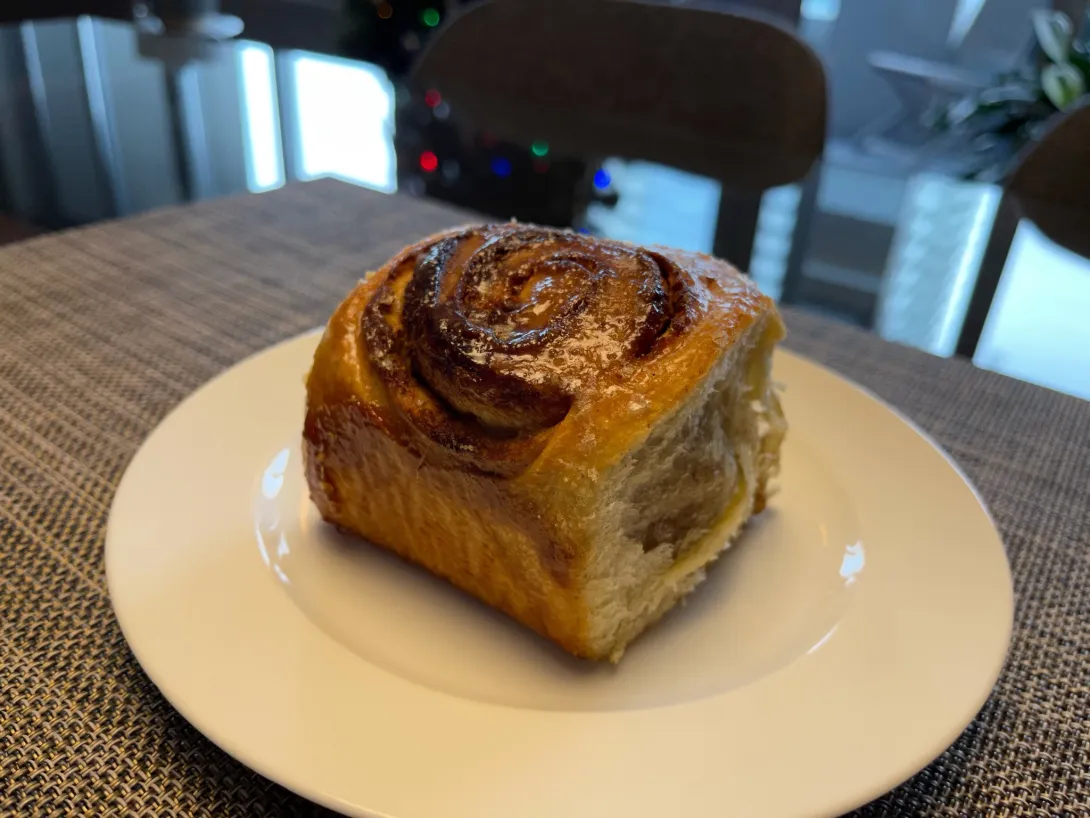Benito's blog
Matcha Black Sesame Sourdough Babka Wreath with Yuzu Glaze
Wanting to recover from my last two disasters of babka bakes and applying what I learned from them. We do truly learn more from our disasters than our successes (thanks Dan). I decided to try to use some Matcha powder I recently purchased and make a babka with a much drier filling that would avoid the pitfalls of soggy crumb. I am adapting the same recipe for sourdough babka by Maurizio of theperfectloaf.com.
Red Miso Furikake (Sesame seeds and Nori) Sourdough
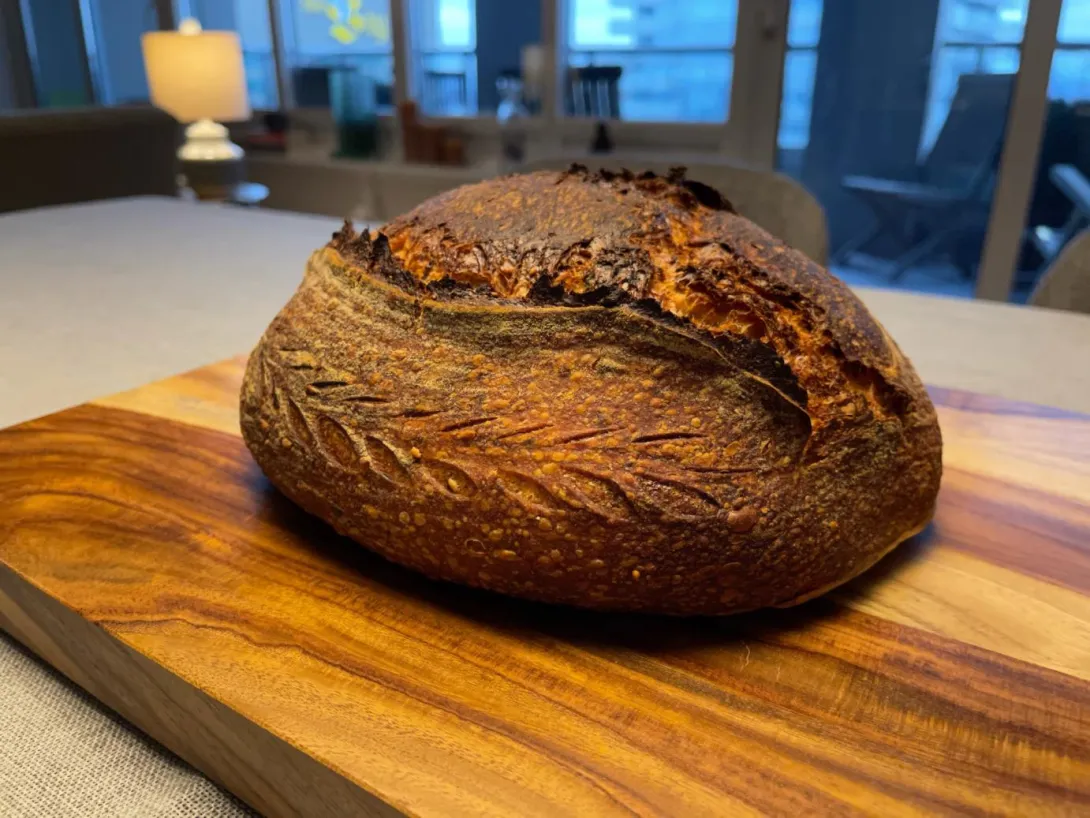
In order to bring out much more miso flavour I used my red miso and increased it to 10%.
Total Flour 494 g
Bread Flour 88.5% 437 g
Whole Wheat 11.5% 57 g all in levain
Total Water 387.5 g 78.5% hydration
Levain 115 g
Miso 49 g 10%
Salt 7.5 g
Overnight Levain build 1:6:6
Poppyseed Crusted Yorkville Sourdough Baguettes
I’m closing the year out by baking these baguettes. I spent a good part of the summer and into fall learning how to bake baguettes with a ton of help from Alan, Don, Doc and Danny and I’d like to thank them for helping me to learn how to make these. I doubt I would even have tried had it not been for their prodding and the Community Bake.
The details of my formula are In this link.
